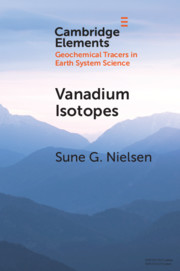Element contents
Vanadium Isotopes
Published online by Cambridge University Press: 23 December 2020
Summary
- Type
- Element
- Information
- Online ISBN: 9781108863438Publisher: Cambridge University PressPrint publication: 28 January 2021
References
Key Papers
First high-precision V isotope studies that documented chemical separation techniques and mass spectrometric protocols:
Papers that documented the composition of seawater and modern marine fluxes:
Theoretical study of V isotope fractionation:
References
- 11
- Cited by



